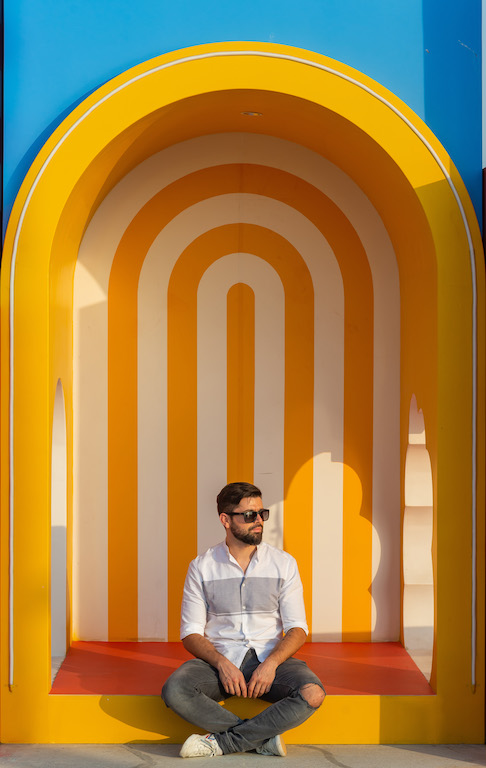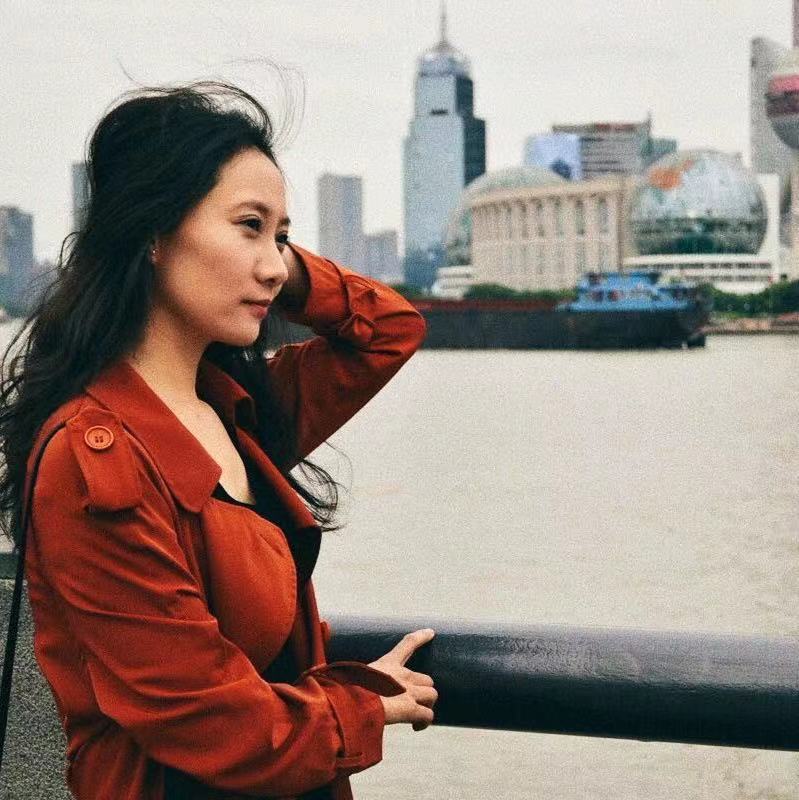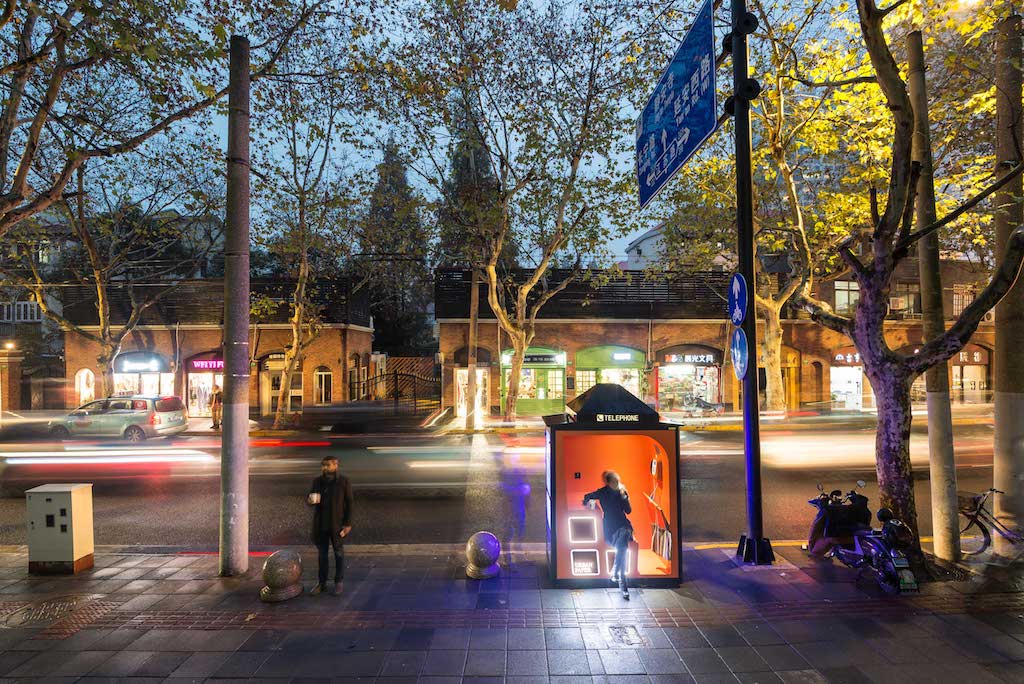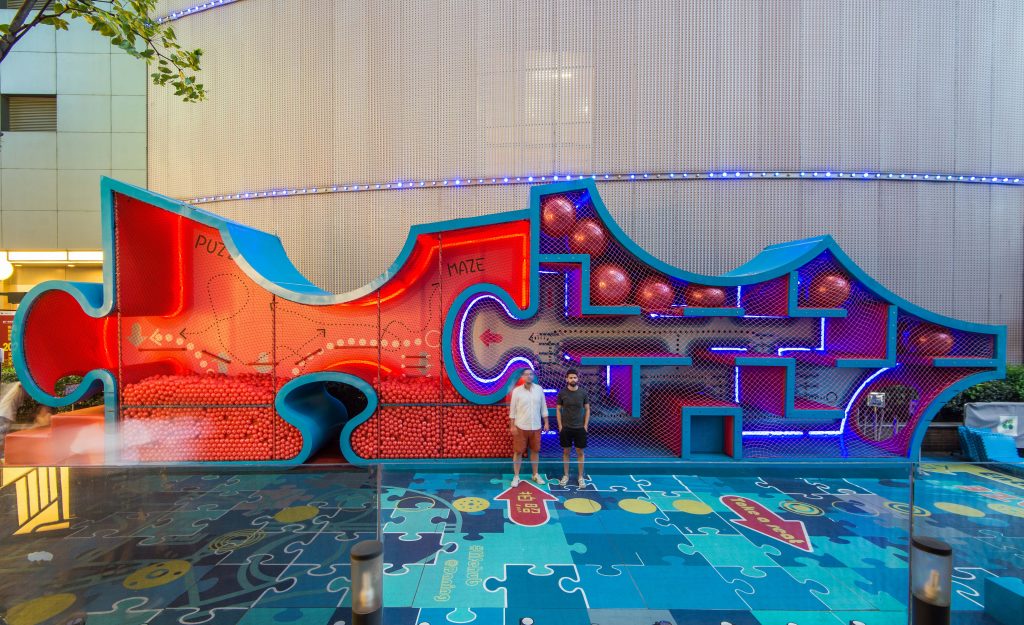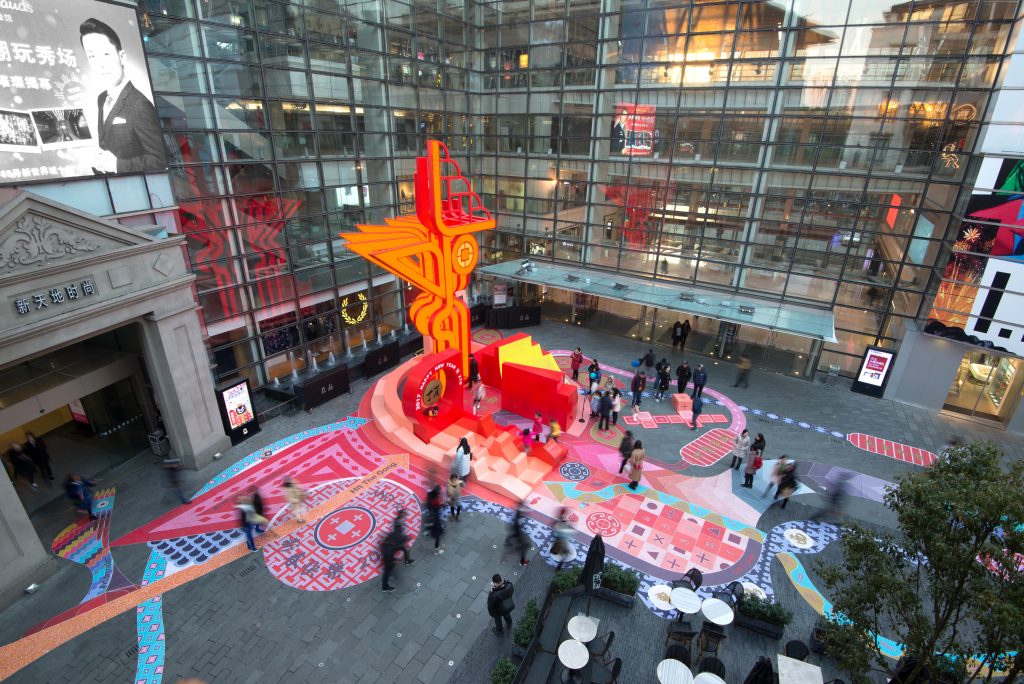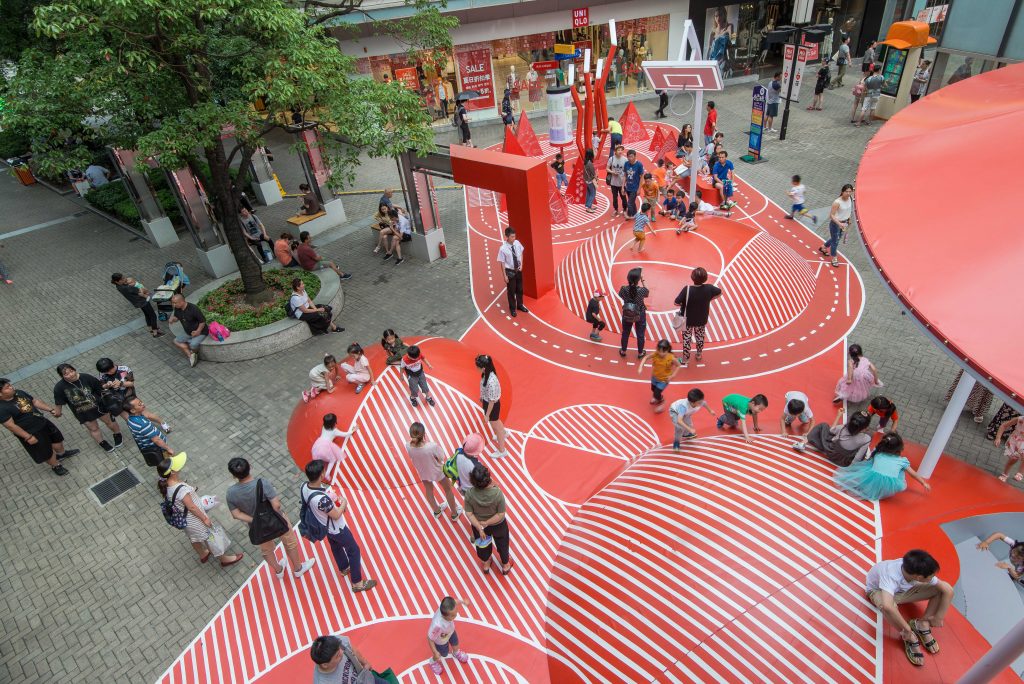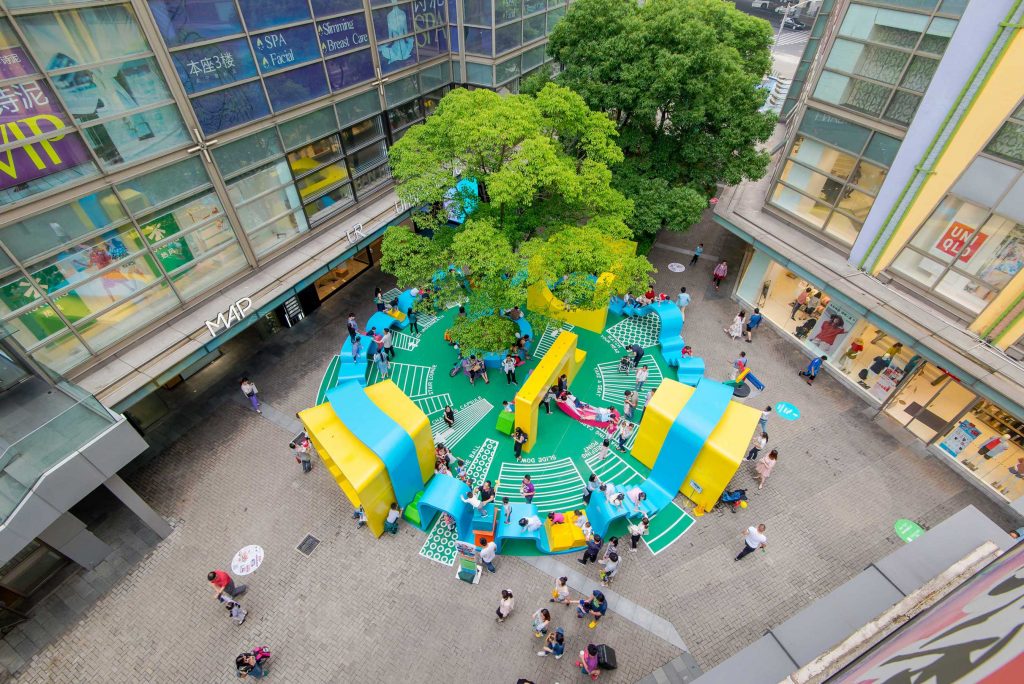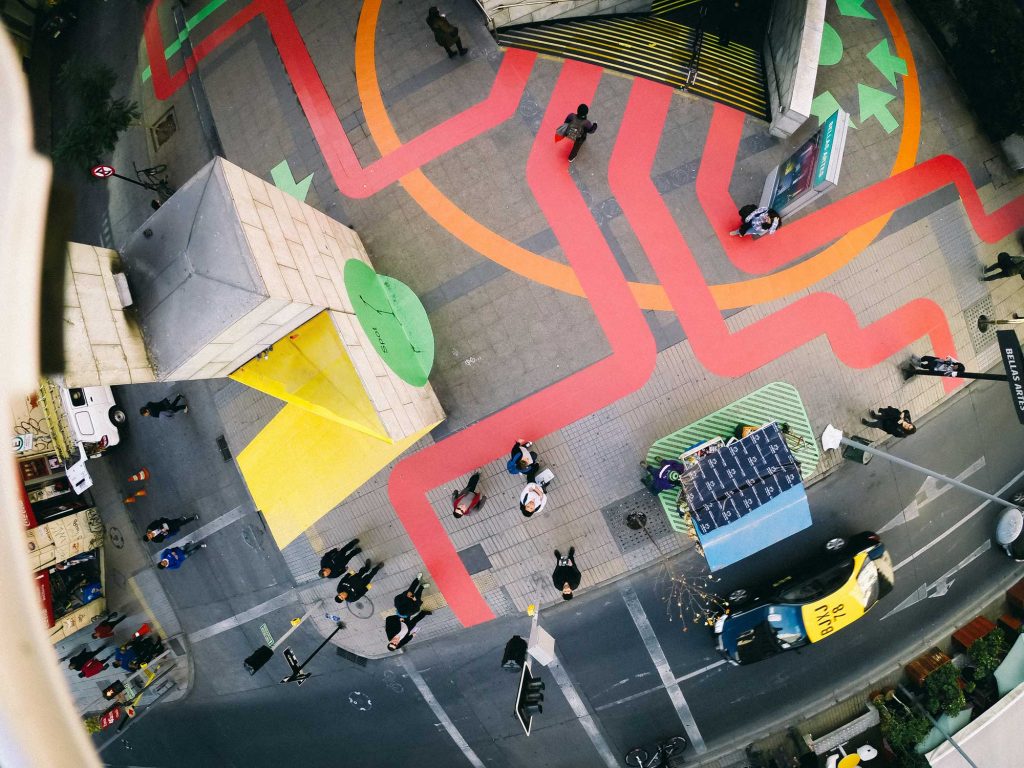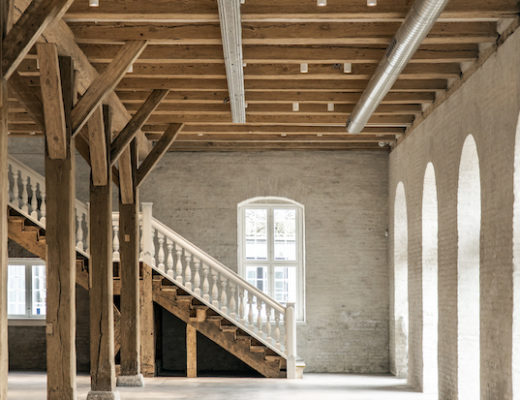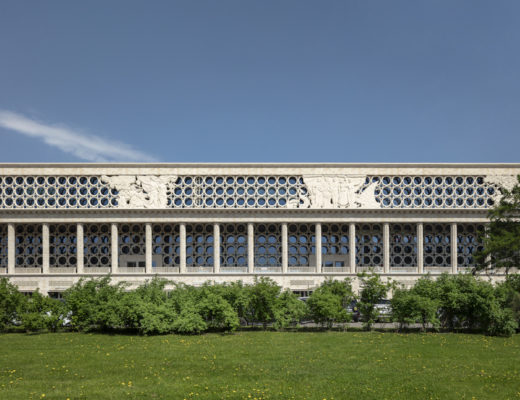Shanghai-based 100 Architects, founded in 2013 by Chilean architect Marcial Jesus and now led by him as well as two partners – Spanish architect Javier Gonzalez Rivero and Chinese architect Jenny Fan – is an architecture studio that doesn’t do buildings – at least not in the conventional sense. Instead, the practice focuses on the public realm, public spaces for leisure, recreation and entertainment in all their typologies and variations. The team’s Shanghai office is composed of 15 young creative architects and designers from France, Italy, Spain, Chile, Colombia, Uruguay and, of course, China, whose work lies at the intersection of placemaking, street art, landscape architecture and urban interventions.
The studio specialises in street architecture and architectural objects both ephemeral and permanent, which encourage the occurrence of social dynamics and create human-scale landmarks. Their works can be seen in cities around the world such as Shanghai, Chengdu, Miami, Santiago, Dubai, San Sicario, New York, Moscow, New York, Mexico City and Lisbon among others. In an exclusive interview with DE51GN, the core team discusses the social impact of urban street architecture in placemaking and the challenges of working in a diverse country such as China.
Why did you decide to focus on the urban intervention aspect of architecture?
This realisation came many years ago. During the creation process of 100 Architects as a professional architectural company, we passed through a period of research in which we defined two fundamental aspects of our brand’s identity: Where should we focus our practice, and what architectural or design style should we embrace?
First of all, at 100, we believe that working in the public realm is a privilege. This is where our design has the biggest impact on the largest number of people. We believe it is a very relevant and meaningful realm of action, where we could produce a direct impact on the citizens and users of determined urban spaces.
“We believe that respect, usage and pride for the public realm should be considered a form of education. We also believe that many of the urban challenges that developing cities are facing could be overcome with such an education. Note that this is not the kind of education you glean from a classroom or from your parents; it is an education you get from living in a city that provides spaces for public and urban enjoyment, spaces that invite people to socialise, interact and respect. It is an innate understanding of how a city is built and how its very structure can benefit you.” – 100 Architects
Therefore, we developed a singular vision: designing architectural objects that attract people and encourage social interactions. Within that range of action, we have already developed projects not only as “interventions” in existing urban enclaves, but also projects that would rather fit into the category of landscape architecture, but always with our special twist and approach as “street architecture” rather than traditional landscape architecture design.
Secondly, we addressed the aspect of the architectural design style, and there were many factors that played a defining role in that. As young architects trying to set up a business based in China that targets the global market, we figured that we were facing many challenges.
We questioned ourselves about how to call attention and make our projects remarkable in this culture of disposability, wherein art is forgotten as quickly as it is celebrated. And we came to understand that just architectural objects for social interactions were not enough to attract the attention on a global scale. Rather, we had to play according to the rules of this culture of overstimulation, in addition to having a functional purpose and a meaningful narrative.
Our projects had to pop and be provocative, eye-catching and contrasting from their surroundings, hence our particular use of colours and iconic shapes. But our projects also had to offer an interesting programme of functions to be openly used and enjoyed, and displayed as open platforms for social interactions.
In short, we needed a striking and eye-catching style that would call the attention of citizens, stimulating them and encouraging the occurrence of social dynamics. At this point, our design approach was distanced from traditional landscape architecture, which historically has blended its context with its surroundings. However, this doesn’t mean that our projects are not tailor-made for a particular space or that they don’t meet the needs of their surroundings. Our projects in public spaces seek to stimulate the user by providing colourful landscapes and intricate topographies that allow the user to interact in a much closer way with the objects and space.
What according to you is lacking in most existing urban public spaces?
Public space is something that has undergone almost no innovation in the past 100 years. Urban plazas, squares and urban spaces for entertainment have, of course, gotten more sophisticated and adapted to the current trends and technology. However, these public spaces haven’t given an answer to the revolutions that the world is experiencing.
We believe that nowadays it is not enough to simply have trees, a patch of greenery, a bench and nice lighting features in order to have a remarkable public space. Nowadays, Millennials are experienced seekers, to the point that they prefer to invest in meaningful and memorable life experiences rather than in owning objects or products. Also, kids nowadays are not the same as when we were kids; they are exposed and used to different kinds of sensory stimulations. In that regard, we believe urban public spaces are lacking a form of recreation that meets those new needs of a generation that demands increasing stimulation and fantasy in its experiences.
In the near future, urban public spaces will inevitably evolve into something that at this moment we can only guess since we have no certainties. However, we believe we create architecture according to the spirit of time – hyper-stimulating architecture for the postmodern era.
What are the most important aspects of urban interventions that aid placemaking and lead to a unifying space for communities?
In order to aid placemaking, urban interventions despite being eye-catching, pop and controversial, must serve purposes that are focused on people’s health, happiness and wellbeing. As we like to say, we sell happiness. Over time, our office has specialised in conceptualising interventions that bring joy and entertainment to the citizens in their public realm through fantasy and surprise, two attributes we always try to implement in our proposals.
The fantasy factor is the one boosting the imagination and creativity of the users, despite their age, while the surprise factor refers to the feeling of encountering completely unexpected spaces when walking through a city, which is something we seek.
It is through these two attributes that our urban interventions make the link and engage with the audience and the citizens. Once that link is created, our projects are just pure platforms for the community to colonise – not only enjoy the spaces, but most importantly, to enjoy the social interactions that those spaces encourage through their morphology. The ultimate purpose of those spaces is to be used by the community – even in totally different ways that were not even planned by us at the studio.
Public space, by attracting people, will produce new dynamics and opportunities, and in a world when technology, social media and online retail are replacing and eliminating our natural meeting places, we believe that our design should explore ways to stimulate human interactions in the urban space. Because at the end of the day, human connectivity is the kind of connectivity that triggers wellbeing and happiness, productivity and innovation.
What are the biggest challenges of creating such urban spaces in a big country like China? How do the socio-cultural aspects influence such spaces?
In China, the public space is such a delicate and extensive matter to be discussed, not only from a design point of view, but also from a sociological, cultural and political point of view.
At first sight, it might seem like the concept of public space in China may differ a lot from the way it is understood in Western countries, due to the lack of plazas, small urban squares, and proper spaces to gather. In Chinese cities, public spaces are more like corridors – big streets and wide sidewalks. It seems like public spaces are merely gaps between buildings, endless corridors and sidewalks with no public furniture where to sit down, where one can only circulate from point A to point B.
In Shanghai, The Bund for instance, is the most notorious public space in the city and it is essentially a wide hardscape platform in which thousands of people walk past every day admiring the colossal scale of the city.
However, this situation is a product of the most dramatic urban transformation the world has ever seen, in which China increased its population living in urban areas from rural areas by more than 600 million people in a matter of just 60 years. During that rapid process of urbanisation, big chunks of the city were reclaimed from people at a faster speed than people actually needed, completely changing their lifestyles and relationships with their immediate urban surroundings.
That’s the reason why we can still see elder Chinese urban citizens gathering in pocket plazas with their own foldable chairs and tables, playing mahjong, cards, or simply gathering and chatting, while women organise group dances every night. Not long ago, they used to live in Lilongs: alleyway communes in which communal outdoor living and space sharing was commonly and widely exercised. They just seem to be claiming their spaces and original lifestyles back.
On one hand, this scenario is a huge challenge for a practice like ours to be able to intervene in public spaces and penetrate into their idiosyncrasies. However, on the other hand, the same rapid urbanisation and globalisation process has generated a new type of public space in China, commonly known as POPS (Privately Owned Public Spaces).
The POPS, although privately owned, are legally required by the city’s land-use ordinances as a result of deals between private developers and the civic authorities to grant public space share in private developments. They must stay open to the public, and as a consequence, exactly the same social dynamics take place in those spaces as the ones happening in purely public spaces – hence potential spaces to be intervened by our office, despite its controversial nature.
“In China, the public space is such a delicate and extensive matter to be discussed, not only from a design point of view, but also from a sociological, cultural and political point of view.” – 100 Architects
What are some of the attributes of successful public projects in urban environments? Could you site a few examples and what makes them successful?
Besides the attributes typically known to impact positively in citizens’ health and wellbeing, such as openness, accessibility, walkability, free mobility, playability, shareability, social connectivity and perhaps a sense of belonging to your surrounding public realm – we usually measure the success of urban environments according to our own recipe for successful projects in the public realm.
For us to consider a project remarkable, contemporaneous and successful, it must include the following four key attributes:
Contrast: The project contrasts with its context, becoming iconic, colorful and eye-catching.
Aesthetic independence: The project possesses aesthetic independence, without mimicking the surroundings.
Pop & Controversial: Colourful, eye-catching and disruptive.
Instant functions: The project should offer an interesting programme of functions to be openly used.
Which cities do you reckon address urban issues well through architecture and design?
In Europe, cities such as Copenhagen and Amsterdam have always been the avant-garde models of exemplary design and management of public realm. Both cities’ design is citizen-centered, which translates into very environmentally friendly and walkable capitals. Curiously, both of them share many common characteristics, such as the thriving culture of biking as a means of green transportation, numerous canals and very high-quality standards of what shared public spaces are supposed to be.
Barcelona is also a cutting-edge case study in regard to the public realm, due to its successful urban regeneration which inspires other cities around the world.
In America, South American cities have historically always had a much more developed understanding of the value of communal spaces than their peers from North America. However, cities like San Francisco, Los Angeles, Miami, Mexico City or Toronto have been emerging as great people-centered urban ecosystems.
In Asia, the triple “S” cities – Singapore, Shanghai and Seoul – are the ones that would stand out as the most innovative and thriving Asian cities where people-centered city planning is undergoing a transformation in order to consolidate these community-oriented mega-cities filled with vibrant culture and history.
Do you reckon urban planners often underestimate the value of urbanscape?
We would like to quote the well-known Danish urban architect, Jan Gehl, who said: “A good city is like a good party — people stay longer than really necessary, because they are enjoying themselves.”
We are strong believers of this theory: Good public spaces definitely make cities a better place to live in. The importance of good public spaces in cities has been not only underestimated but in cases even neglected, reducing the attributes of public space to mere gaps in between buildings. If citizens are not part of the equation when designing our cities, we are denying them the contact with the real world and interactive lifestyle.
We have witnessed firsthand the joy our projects bring to the public – the way they can turn neglected city spaces into places of colour, stimulation and social interaction, and ultimately invite people to reclaim these urban areas for themselves. We usually say that “we sell happiness”, because our interventions bring new colours, functions and character to the cityscape, and can therefore, be understood as a form of urban celebration.
We believe that respect, usage and pride for the public realm should be considered a form of education. We also believe that many of the urban challenges that developing cities are facing could be overcome with such an education. Note that this is not the kind of education you glean from a classroom or from your parents; it is an education you get from living in a city that provides spaces for public and urban enjoyment, spaces that invite people to socialise, interact and respect. It is an innate understanding of how a city is built and how its very structure can benefit you.
In short, we believe our urban interventions are contributing to the quality and habitability of the cities we’ve had the chance to work in, while simultaneously raising awareness of urban aesthetics in the process.
You recently worked on a project in another part of the world – Dubai. Please share some details of the outcome?
Our project in Dubai is called Creek Play. It is a project intended to enhance the public realm for the upcoming opening of Dubai Creek Harbour, the latest ambitious project from Emaar Properties in Dubai.
We were commissioned to design a stimulating intervention on the waterfront; to enhance the experience of residents and visitors on the newly built Creek Island, along 400 meters of waterfront promenade.
Conceptually conceived as a playful village, the proposal manifested as an eye-catching playscape for the enjoyment of kids and adults alike, adding a pinch of colour and playfulness along the meandering promenade.
The area to intervene was so long that we decided to split it into seven focal nodes of activity, evenly spread along the waterfront. These seven different stations create a journey of fun, and a circuit of eventful surprises along the promenade. The nodes also have a symbolic meaning related to the federation of the seven emirates as the United Arab Emirates. Hence, while each node was rendered as a little village by itself and can be understood as an independent entity, all of them are still part of a common narrative, linked to each other.
The seven focal nodes of activity are connected to each other through a series of colourful walls and floor graphics inspired by Dubai’s vernacular Arabesque shapes, as the ones used in traditional doors, windows and other elements of vernacular architecture.
Each node is composed of a conglomeration of capsules forming a stimulating village of fun, in which each capsule offers a different instant function, such as sitting, swinging, sliding, climbing, laying down, playing, and hanging etc.
Photos: 100 Architects


